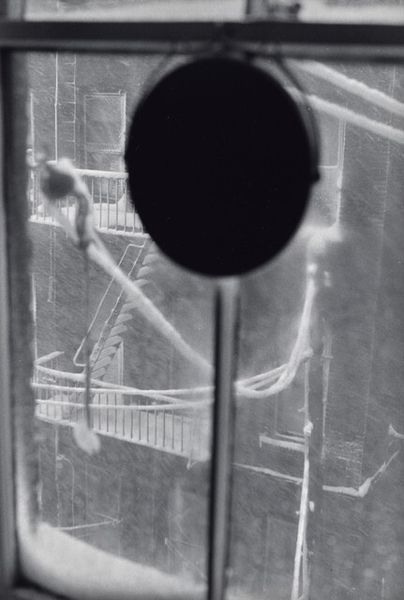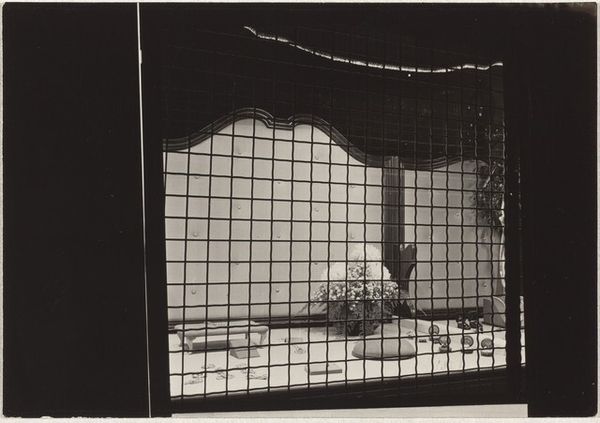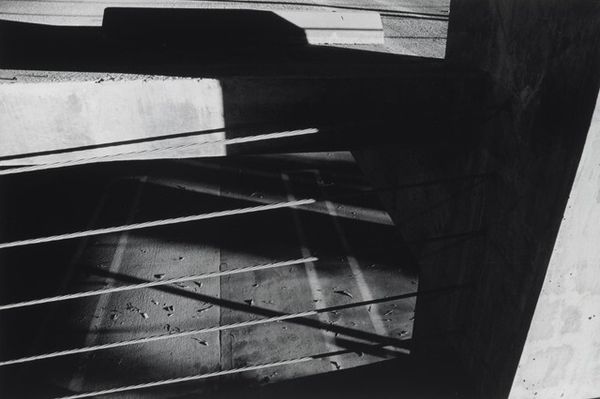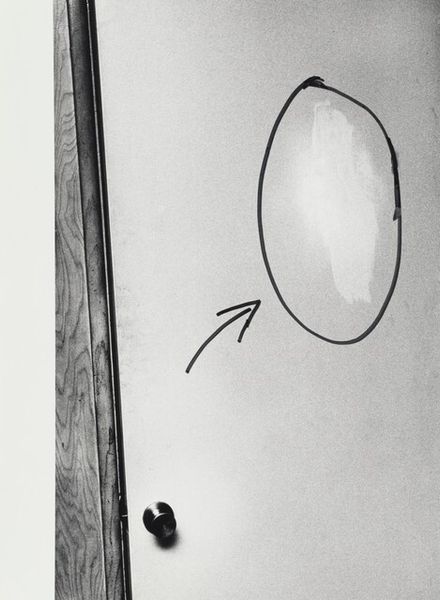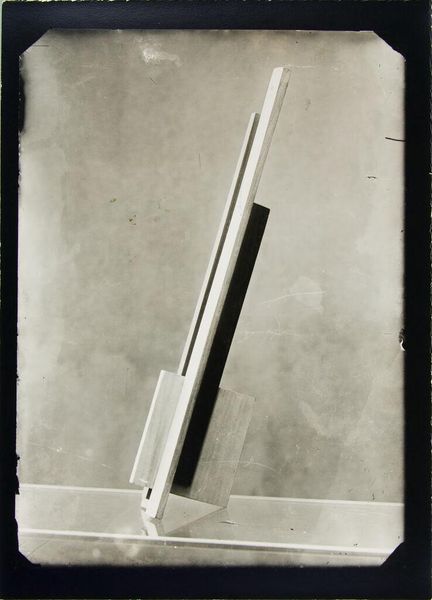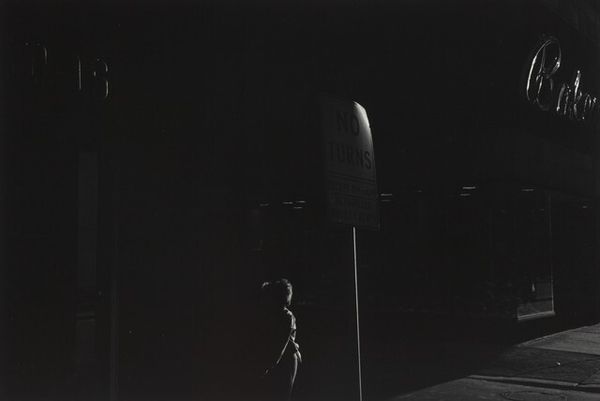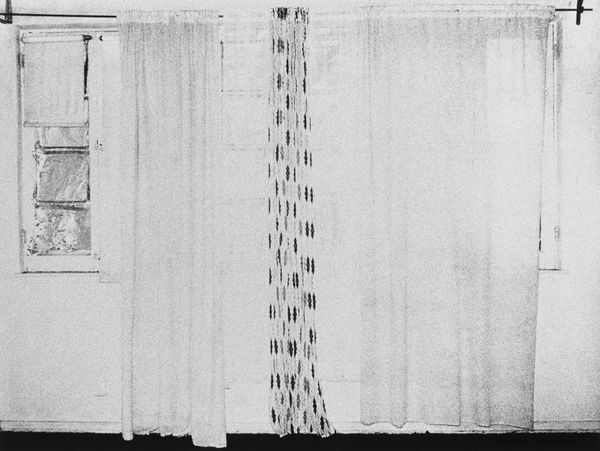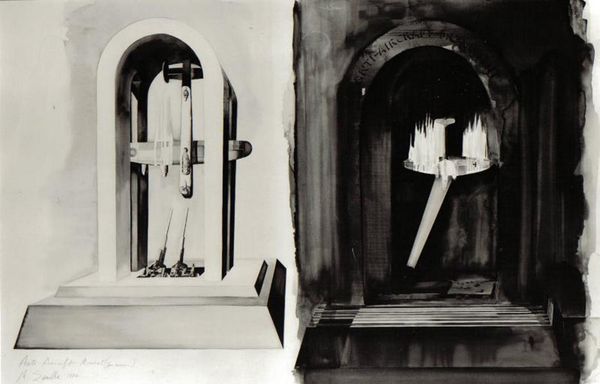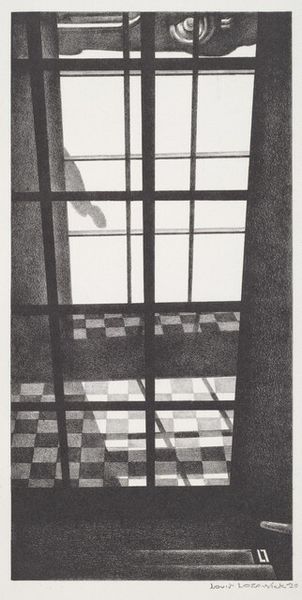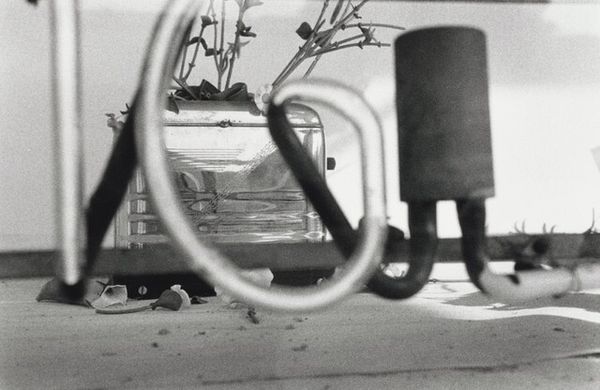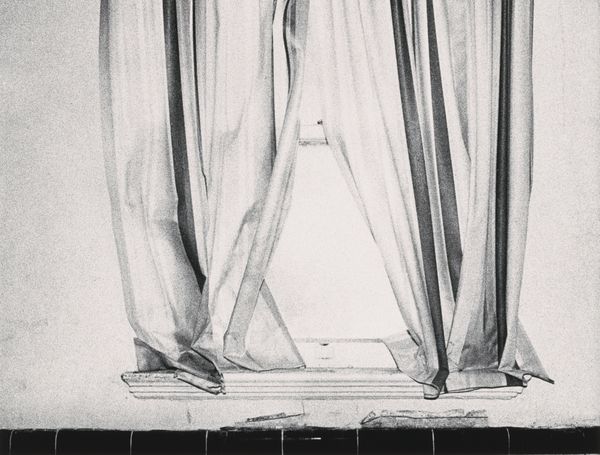
print, photography
#
black and white photography
# print
#
landscape
#
black and white format
#
photography
#
black and white theme
#
framed image
#
black and white
#
monochrome photography
#
monochrome
#
monochrome
Dimensions: image: 56.83 × 45.09 cm (22 3/8 × 17 3/4 in.) sheet: 60.64 × 50.48 cm (23 7/8 × 19 7/8 in.)
Copyright: National Gallery of Art: CC0 1.0
Curator: Here we have Abelardo Morell's “Ground Swell by Hopper,” a monochrome photograph created in 2007. What's your initial feeling looking at it? Editor: I’m immediately struck by the feeling of being both grounded and completely untethered at the same time. Like, are they sailing *in* the ocean, or hovering just above a field of ghostly wheat? The light is beautiful. It reminds me a little bit of the album artwork of Radiohead albums, or like Moby Dick dream sequences. Curator: The ghostly quality is fascinating, particularly when thinking about Hopper. Hopper, as we know, often evokes isolation, a sort of liminal space. Morell, though, is explicitly engaging with Hopper's earlier work in a critical conversation about place, history, and, importantly, photography itself. How can photography reinterpret art and social critique? Editor: That's interesting. So, Morell is photographing an earlier work, but stripping out the color and imbuing the ocean and landscape with this ethereal quality. It feels almost as if he's revealing an inner anxiety beneath Hopper's own interpretation, as if photography lets you travel back and show a new reality of an accepted reality. A quiet melancholy... Do you think Morell also touches on themes of labor and social alienation through the lens of Hopper's narrative? Curator: Absolutely. Considering labor, think about the figures in the boat; they seem almost spectral, devoid of tangible purpose beyond navigating this uncertain terrain. This evokes the precarity of human existence in a rapidly changing world, mirrored by the distortions of photographic reinterpretation. The framing—the choice to present this within the photographic medium—adds layers of discourse, right? How photography shapes, distorts, or reveals ‘truth’. Editor: It does. I mean, I feel the instability in the work. There's such subtle emotion behind the boat’s placement on this churning ground, especially knowing it's based on an original that likely held different tones of color. As viewers, it's really almost as if we are observers in some kind of warped theater! Curator: It brings attention to the intersection of personal, historical, and representational narratives. It reframes not only the artwork but the ways in which we consider photographic and artistic interventions in a wider socio-political framework. Editor: I never really understood this Hopper fellow's allure until this photo of his work turned my head. This monochrome conversation piece shows the benefit of a great collaboration.
Comments
No comments
Be the first to comment and join the conversation on the ultimate creative platform.
